JNBS Journal
The Journal of Neurobehavioral Sciences (J Neuro Behav Sci) is a peer-reviewed open-access neuroscience journal without any publication fees. All editorial costs are sponsored by the Üsküdar University Publications and the Foundation of Human Values and Mental Health. Each issue of the Journal of Neurobehavioral Sciences is specially commissioned, and provides an overview of important areas of neuroscience from the molecular to the behavioral levels, delivering original articles, editorials, reviews and communications from leading researchers in that field.
Web site: https://dergipark.org.tr/en/pub/jnbs
The Journal of Neurobehavioral Sciences (J Neuro Behav Sci) is a peer-reviewed open-access neuroscience journal without any publication fees. All editorial costs are sponsored by the Üsküdar University Publications and the Foundation of Human Values and Mental Health. Each issue of the Journal of Neurobehavioral Sciences is specially commissioned, and provides an overview of important areas of neuroscience from the molecular to the behavioral levels, delivering original articles, editorials, reviews and communications from leading researchers in that field. JNBS is published electronically and in the printed form 3 times a year by Uskudar University. The official language of JNBS is English. The average time from delivery to first decision is less than 30 days. Accepted articles are published online on average on 40 working days prior to printing, and articles are published in print at 3-6 months after acceptance. Please see our Guide for Authors for information on article submission. If you require any further information or help, please email us (jnbs@uskudar.edu.tr)
Aims & Scope
JNBS (J. Neuro. Behav. Sci) is a comprehensive scientific journal in the field of behavioral sciences. It covers many disciplines and systems (eg neurophysiological, neuroscience systems) with behavioral (eg cognitive neuroscience) and clinical aspects of molecules (eg molecular neuroscience, biochemistry), and computational methods in health. The journal covers all areas of neuroscience with an emphasis on psychiatry and psychology as long as the target is to describe the neural mechanisms underlying normal or pathological behavior. Preclinical and clinical studies are equally acceptable for publication. In this context; the articles and treatment results of computational modeling methods of psychiatric and neurological disorders are also covered by the journal. JNBS emphasis on psychiatric and neurological disorders. However, studies on normal human behavior are also considered. Animal studies and technical notes must have a clear relevance and applicability to human diseases. Case Reports including current neurological therapies or diagnostic methods are generally covered by JNBS. Besides; The scope of JNBS is not limited to the abovementioned cases, and publications produced from the interdisciplinary studies established in the following fields and with the behavioral sciences are included in the studies that can be published in JNBS.
- Cognitive neuroscience
- Psychology
- Psychiatric and neurological disorders
- Neurophysiology
- System neuroscience
- Molecular neuroscience
- Computational Neuroscience
- Neuromodulation, Neurolinguistic, Neuromarketing
- Biochemistry
- Computational and simulation methods and interdisciplinary applications in medicine
- Artificial Intelligence (AI) and interdisciplinary applications in medicine
- Brain imaging
- In vivo monitoring of electrical and biochemical activities of the brain
- Molecular Biology
- Genetics
- Bioinformatics
- Psychiatric Nursing
Editor-in-Chief:
Prof. Dr. Nevzat Tarhan (MD), Head of the Department of Clinical Psychology, Uskudar University, Istanbul, Türkiye
Co-Editors:
Prof. Dr. Tayfun Uzbay (MD), Head of Department of Internal Medicine, Uskudar University, Istanbul, Türkiye
Prof. Dr. Baris Metin (MD), Head of Department of Neuroscience, Uskudar University, Istanbul, Türkiye
Prof. Dr. Turker Tekin Erguzel, Head of Software Engineering Department, Institute of Health Sciences, Uskudar University, Istanbul, Türkiye
Publication Editor:
Assist. Prof. Dr. Inci Karakas, Environmental Health Department, Institute of Health Sciences, Uskudar University, Istanbul, Türkiye
Editor-in-Chief
Prof. Dr. Nevzat Tarhan (MD)
Head of the Department of Clinical Psychology, Uskudar University, Istanbul, Türkiye
Co-Editor
Prof. Dr. Tayfun Uzbay (MD)
Head of Department of Internal Medicine, Uskudar University, Istanbul, Türkiye
Prof. Dr. Barıs Metin (MD)
Head of Department of Neuroscience, Uskudar University, Istanbul, Türkiye
Prof. Dr. Turker Tekin Erguzel
Head of Software Engineering Department, Institute of Health Sciences, Uskudar University, Istanbul, Türkiye
Publication Editor
Assist. Prof. Dr. Inci Karakas
Environmental Health Department, Institute of Health Sciences, Uskudar University, Istanbul,Türkiye
Statistical Editor
Prof. Dr. Tugba Altıntas
Healthcare Management, Uskudar University, Istanbul, Türkiye
Language Editor
Assist. Prof. Dr. Ebru Ozkan Oktay
Head of Laboratory Technology Department, Uskudar University, Istanbul, Türkiye
ebru.ozkanoktay@uskudar.edu.tr
Section Editors
Prof. Dr. Sultan Tarlacı, Academic Staff, Department of Neuroscience, Uskudar University, Istanbul, Türkiye
sultan.tarlaci@uskudar.edu.tr
Prof. Dr. Tayfun Uzbay, Academic Staff, Head of Department of Internal Medicine, Uskudar University, Istanbul, Türkiye
tayfun.uzbay@uskudar.edu.tr
Prof. Dr. Türker Tekin Ergüzel, Academic Staff, Head of Software Engineering Department, Uskudar University, Istanbul, Türkiye
turker.erguzel@uskudar.edu.tr
Prof. Dr. Korkut Ulucan, Academic Staff, Department of Basic Medical Sciences, Marmara University, Türkiye
korkut.ulucan@marmara.edu.tr
Prof. Dr. Hüseyin Ozan Tekin, Academic Staff, Department of Medical Diagnostic Imaging, Sharjah University, Sharjah, United Arab Emirates
htekin@sharjah.ac.ae
Associate Professor Çağlar Uyulan, Academic Staff, Department of Mechanical Engineering, İzmir Kâtip Çelebi University, Istanbul, Türkiye
caglar.uyulan@ikc.edu.tr
Advisory Board
Prof. Dr. Maheen Adamson
Academic Staff, Stanford School of Medicine, Stanford, CA
madamson@stanford.edu
Dr. Derek Fisher Professor
Academic Staff, Mount Saint Vincent University - Halifax, Nova Scotia, Canada
derek.fisher@msvu.ca
Dr. Elliot Clayton Brown
Academic Staff, University of Maryland School of Medicine, USA
elliot.c.brown@gmail.com
Prof. Dr. Behcet Cosar
Academic Staff, Institute of Health Sciences, Gazı University, Türkiye
bcosar@gazi.edu.tr
Prof. Dr. Aysegul Durak Batıgun
Academic Staff, Ankara University, Türkiye
batigun@ankara.edu.tr
Prof. Dr. Rasit Tukel
Academic Staff, Institute of Health Sciences, Istanbul University, Türkiye
tukel@istanbul.edu.tr
Prof. Dr. Erdal Vardar
Academic Staff, Trakya University, Türkiye
erdalvardar@trakya.edu.tr
Prof. Dr. Basar Bilgic
Academic Staff, Institute of Health Sciences, Istanbul University, Türkiye
bbilgic@istanbul.edu.tr
The Journal of Neurobehavioral Sciences (JNBS) is the official, scientific and accessible publication of Üsküdar University, which includes original works in all areas of Neuroscience. All submitted texts/manuscripts are reviewed in detail by our editorial staff, which consists of distinguished researchers and contributes to our journal by allocating valuable time. It is an honor for us to invite distinguished scientists/people like you to publish their quality work as text/article to support the global science community. JNBS is currently indexed in Cite Factor, Bibliomed, Türkiye Atıf Dizini, Türk Psikiyatri Dizini, Asos Indeks, J-Gate, Türk Medline, Research Bib, Directory of Research Journals Indexing, Root Indexing, and similar national and international databases. Besides, the evaluation process of other prestigious international databases and catalogs is going as well. The Journal of Neurobehavior Sciences is being prepared and published free of charge. All publication and printing costs are covered by Üsküdar University Press and Human Values and Mental Health Foundation sponsorship.
Texts accepted three weeks prior to the printing date of the current issue will be published online immediately after acceptance. The journal is published in English, so the texts written in English are evaluated.
We look forward to your valuable participation and thank you in advance for your contributions.
Yours truly,
Editorial in Chief
Nevzat TARHAN
Authorship Criteria
Authorship credit should be based only on substantial contributions to each of the three components mentioned below:
1.Concept and design of study or acquisition of data or analysis and interpretation of data
2.Drafting the article or revising it critically for important intellectual content; and
3.Final approval of the version to be published.
Participation solely in the acquisition of funding or the collection of data does not justify authorship. General supervision of the research group is not sufficient for authorship. Each contributor should have participated sufficiently in the work to take public responsibility for appropriate portions of the content of the manuscript. The order of naming the contributors should be based on the relative contribution of the contributor towards the study and writing the manuscript. Once submitted the order cannot be changed without the written consent of all the contributors. The journal prescribes a maximum number of authors for manuscripts depending upon the type of manuscript, its scope, and number of institutions involved (vide infra). The authors should provide a justification if the number of authors exceeds these limits.
Contribution Details
Contributors should provide a description of contributions made by each of them towards the manuscript. The description should be divided into the following categories, as applicable: concept, design, the definition of intellectual content, literature search, clinical studies, experimental studies, data acquisition, data analysis, statistical analysis, manuscript preparation, manuscript editing, and manuscript review. Authors' contributions will be printed along with the article. One or more authors should take responsibility for the integrity of the work as a whole from inception to published article and should be designated as 'guarantor'.
Conflicts of Interest/ Competing Interests
All authors of articles must disclose any and all conflicts of interest they may have with the publication of the manuscript or an institution or product that is mentioned in the manuscript and/or is important to the outcome of the study presented. Authors should also disclose conflicts of interest with products that compete with those mentioned in their manuscript.
Submission of Manuscripts
All manuscripts must be submitted online through the website https://dergipark.org.tr/en/pub/jnbs First-time users will have to register at this site (https://dergipark.org.tr/en/login). Registration is free but mandatory. Registered authors can keep track of their articles after logging into the site using their username and password. Authors do not have to pay for submission, processing, or publication of articles. If you experience any problems, please contact the editorial office by e-mail at jnbs@uskudar.edu.tr
The submitted manuscripts that are not as per the “Instructions to Authors" would be returned to the authors for technical correction, before they undergo editorial/ peer-review. Generally, the manuscript should be submitted in the form of two separate files:
1] Title Page/First Page File/Covering Letter
This file should provide
1.The type of manuscript (original article, case report, review article, Letter to editor, Images, etc.) title of the manuscript, running title, names of all authors/ contributors (with their highest academic degrees, designation, and affiliations), and name(s) of the department(s) and/ or institution(s) to which the work should be credited. All information that can reveal your institute affiliation should be here. Use Docx files. Do not zip the files;
2.The total number of pages, total number of photographs, and word counts separately for abstract and for the text (excluding the references, tables, and abstract), word counts for introduction + discussion in case of an original article;
3.If the manuscript was presented as part of a meeting, the organization, place, and exact date on which it was read. A full statement to the editor about all submissions and previous reports that might be regarded as redundant publication of the same or very similar work. Any such work should be referred to specifically and referenced in the new paper. Copies of such material should be included with the submitted paper, to help the editor decide how to handle the matter.
4.Registration number in case of a clinical trial and where it is registered (name of the registry and its URL)
5. A statement that the manuscript has been read and approved by all the authors, that the requirements for authorship as stated earlier in this document have been met, and that each author believes that the manuscript represents honest work
6.The name, address, e-mail, and telephone number of the corresponding author, who is responsible for communicating with the other authors about revisions and final approval of the proofs, if that information is not included on the manuscript itself.
[2] Blinded Article file: The main text of the article, beginning from Abstract till References (including tables) should be in this file. The file must not contain any mention of the authors' names or initials or the institution at which the study was done or acknowledgments. Page headers/running titles can include the title but not the authors' names. Manuscripts not in compliance with the Journal's blinding policy will be returned to the corresponding author. Use Docx files. Do not zip the files. Limit the file size to 1 MB. Do not incorporate images in the file. If the file size is large, graphs can be submitted as images separately without incorporating them in the article file to reduce the size of the file. The pages should be numbered consecutively, beginning with the first page of the blinded article file.
[3] Images: Submit good quality color images. Each image should be less than 2 MB in size. The size of the image can be reduced by decreasing the actual height and width of the images (keep up to 1600 x 1200 pixels or 5-6 inches). Images can be submitted as jpeg files. Do not zip the files. Legends for the figures/images should be included at the end of the article file.
[5] Cover Letters: All cover letters must contain the following: a statement that the material is original — if findings from the dataset have been previously published or are in other submitted articles, please include the following information:
1.Is the present study a new analysis of previously analyzed data? If yes, please describe differences in the analytic approach.
2.Are some of the data used in the present study being analyzed for the first time? If yes, please identify data (constructs) that were not included in previously published or submitted manuscripts.
3.Are there published or submitted papers from this data set that address related questions? If yes, please provide the citations, and describe the degree of overlap and the unique contributions of your submitted manuscript.
4.the full postal and email address of the corresponding author;
5. the complete telephone and fax numbers of the same;
6.the proposed category under which the manuscript was submitted;
7.a statement that the authors complied with APA ethical standards in the treatment of their participants and that the work was approved by the relevant Institutional Review Board(s);
8.whether or not the manuscript has been or is posted on a website;
9.that APA style (Publication Manual, 6th edition) has been followed;
10.the disclosure of any conflicts of interest with regard to the submitted work;
11.a request for masked review, if desired, along with a statement ensuring that the manuscript was prepared in accordance with the guidelines above.
Authors should also specify the overall word length of the manuscript (including all aspects of the manuscript, except figures) and indicate the number of tables, figures, and supplemental materials that are included.
Preparation of Manuscripts
Manuscripts must be prepared in accordance with "Uniform requirements for Manuscripts submitted to Biomedical Journals" developed by the International Committee of Medical Journal Editors (October 2008). The uniform requirements and specific requirements of The Journal of Neurobehavioral Sciences are summarized below. Before submitting a manuscript, contributors are requested to check for the latest instructions available. Instructions are also available from the website of the journal (https://uskudar.edu.tr/tr/sureli-yayinlar/4/jnbs-dergisi) and from the manuscript submission site https://dergipark.org.tr/en/pub/jnbs).
The Journal of Neurobehavioral Sciences accepts manuscripts written in British English.
Similarity Rate: The similarity of the submitted articles with the Ithenticate program is determined. The similarity rate should be below 20%.
Copies of any permission(s)
It is the responsibility of authors/ contributors to obtain permission for reproducing any copyrighted material. A copy of the permission obtained must accompany the manuscript. Copies of any and all published articles or other manuscripts in preparation or submitted elsewhere that are related to the manuscript must also accompany the manuscript.
Types of Manuscripts
The authors are required to use the downloadable word document templates provided at the end of this page to prepare the manuscripts. The reporting guidelines checklist is provided in these templates which must be duly followed. The authors can also choose the reporting guidelines for the specific study design from the web links provided in the table below and upload it along with the manuscript.
Original articles:
These include randomized controlled trials, intervention studies, studies of screening and diagnostic tests, outcome studies, cost-effectiveness analyses, case-control series, and surveys with high response rates. The text of original articles amounting to up to 6000 words (excluding Abstract, references, and Tables) should be divided into sections with the headings Abstract up to 250 words (It should contain headings such as Background, Aims, and Objectives, Materials and Methods, Results, Conclusion, etc.), Keywords (up to five keywords or brief phrases), Introduction, Material and Methods, Results, Discussion, References, Tables and Figure legends.
Introduction: State the purpose and summarize the rationale for the study or observation.
Materials and Methods: It should include and describe the following aspects:
Ethics: When reporting studies on human beings, indicate whether the procedures followed were in accordance with the ethical standards of the responsible committee on human experimentation (institutional or regional) and with the Helsinki Declaration of 1975, as revised in 2003 (available at https://www.wma.net/policies-post/wma-declaration-of-helsinki-ethical-principles-for-medical-research-involving-human-subjects/). For prospective studies involving human participants, authors are expected to mention about approval of (regional/ national/ institutional or independent Ethics Committee or Review Board, obtaining informed consent from adult research participants and obtaining assent for children aged over 7 years participating in the trial. The age beyond which assent would be required could vary as per regional and/ or national guidelines. Ensure confidentiality of subjects by desisting from mentioning participants' names, initials, or hospital numbers, especially in illustrative material. When reporting experiments on animals, indicate whether the institution's or a national research council's guide for or any national law on the care and use of laboratory animals were followed. Evidence for approval by a local Ethics Committee (for both human as well as animal studies) must be supplied by the authors on demand. Animal experimental procedures should be as humane as possible, and the details of anesthetics and analgesics used should be clearly stated. The ethical standards of experiments must be in accordance with the guidelines provided by the CPCSEA and World Medical Association Declaration of Helsinki on Ethical Principles for Medical Research Involving Humans for studies involving experimental animals and human beings, respectively). The journal will not consider any paper which is ethically unacceptable. A statement on ethics committee permission and ethical practices must be included in all research articles under the 'Materials and Methods' section. In the approval of the ethics committee, the institution, ethics committee no and time (day, month and year) should be clearly stated.
Study design:
Selection and Description of Participants: Describe your selection of the observational or experimental participants (patients or laboratory animals, including controls) clearly, including eligibility and exclusion criteria and a description of the source population. Technical information: Identify the methods, apparatus (give the manufacturer's name and address in parentheses), and procedures in sufficient detail to allow other workers to reproduce the results. Give references to established methods, including statistical methods (see below); provide references and brief descriptions for methods that have been published but are not well known; describe new or substantially modified methods, give reasons for using them, and evaluate their limitations. Identify precisely all drugs and chemicals used, including generic name(s), dose(s), and route(s) of administration.
Reports of randomized clinical trials should present information on all major study elements, including the protocol, assignment of interventions (methods of randomization, concealment of allocation to treatment groups), and the method of masking (blinding), based on the CONSORT Statement (http://www.consort-statement.org).
The authors are required to use the downloadable word document templates provided at the end of this page to prepare the manuscripts. The reporting guidelines checklist is provided in these templates which must be duly followed. The authors can also choose the reporting guidelines for the specific study design from the web links provided in the table below and upload it along with the manuscript.
Reporting Guidelines for Specific Study Designs
| Guideline | Type of Study | Source |
| STROBE | Observational studies including cohort, case-control, and cross-sectional studies | https://www.strobe-statement.org/index.php?id=available-checklists |
| CONSORT | Randomized controlled trials | |
| SQUIRE | Quality improvement projects | http://squire-statement.org/index.cfm?fuseaction=Page.ViewPage&PageID=471 |
| PRISMA | Systematic reviews and meta-analyses | |
| STARD | Studies of diagnostic accuracy | |
| CARE | Case Reports | |
| AGREE | Clinical Practice Guidelines | https://www.agreetrust.org/wp-content/uploads/2016/02/AGREE-Reporting-Checklist-2016.pdf |
The reporting guidelines for other types of studies can be found at https://www.equator-network.org/reporting-guidelines/.
Statistics: Whenever possible quantify findings and present them with appropriate indicators of measurement error or uncertainty (such as confidence intervals). Authors should report losses to observation (such as dropouts from a clinical trial). When data are summarized in the Results section, specify the statistical methods used to analyze them. Avoid non-technical uses of technical terms in statistics, such as 'random' (which implies a randomizing device), 'normal', 'significant', 'correlations', and 'sample'. Define statistical terms, abbreviations, and most symbols. Specify the computer software used. Use upper italics (P 0.048). For all P values include the exact value and not less than 0.05 or 0.001. Mean differences in continuous variables, proportions in categorical variables and relative risks including odds ratios and hazard ratios should be accompanied by their confidence intervals.
Results: Present your results in a logical sequence in the text, tables, and illustrations, giving the main or most important findings first. Do not repeat in the text all the data in the tables or illustrations; emphasize or summarize only important observations. Extra- or supplementary materials and technical detail can be placed in an appendix where it will be accessible but will not interrupt the flow of the text; alternatively, it can be published only in the electronic version of the journal.
When data are summarized in the Results section, give numeric results not only as derivatives (for example, percentages) but also as the absolute numbers from which the derivatives were calculated, and specify the statistical methods used to analyze them. Restrict tables and figures to those needed to explain the argument of the paper and to assess its support. Use graphs as an alternative to tables with many entries; do not duplicate data in graphs and tables. Where scientifically appropriate, analyses of the data by variables such as age and sex should be included.
Discussion: Include a summary of key findings (primary outcome measures, secondary outcome measures, results as they relate to a prior hypothesis); Strengths and limitations of the study (study question, study design, data collection, analysis, and interpretation); Interpretation and implications in the context of the totality of evidence (is there a systematic review to refer to, if not, could one be reasonably done here and now?, what this study adds to the available evidence, effects on patient care and health policy, possible mechanisms); Controversies raised by this study; and Future research directions (for this particular research collaboration, underlying mechanisms, clinical research).
Do not repeat in detail data or other material given in the Introduction or the Results section. In particular, contributors should avoid making statements on economic benefits and costs unless their manuscript includes economic data and analyses. Avoid claiming priority and alluding to work that has not been completed. New hypotheses may be stated if needed, however, they should be clearly labeled as such. About 30 references can be included. These articles generally should not have more than six authors.
Review Articles:
It is expected that these articles would be written by individuals who have done substantial work on the subject or are considered experts in the field. A short summary of the work done by the contributor(s) in the field of review should accompany the manuscript.
The prescribed word count is up to 10000 words excluding tables, references, and abstract. The manuscript may have about 90 references. The manuscript should have an unstructured Abstract (250 words) representing an accurate summary of the article. The section titles would depend upon the topic reviewed. Authors submitting review articles should include a section describing the methods used for locating, selecting, extracting, and synthesizing data. These methods should also be summarized in the abstract.
The journal expects the contributors to give post-publication updates on the subject of review. The update should be brief, covering the advances in the field after the publication of the article and should be sent as a letter to editor, as and when major development occurs in the field.
The Journal prefers systematic reviews that have been registered in PROSPERO https://www.crd.york.ac.uk/prospero/. The PROSPERO registry number should be provided in the review article under the “methodology" section.
Case reports:
New, interesting, and rare cases can be reported. They should be unique, describing a great diagnostic or therapeutic challenge and providing a learning point for the readers. Cases with clinical significance or implications will be given priority. These communications could be of up to 4000 words (excluding Abstract and references) and should have the following headings: Abstract (unstructured), Keywords, Introduction, Case report, Discussion, Reference, Tables and Legends in that order.
The manuscript could be of up to 4000 words (excluding references and abstract) and could be supported with up to 10 references. Case Reports could be authored by up to four authors.
Letter to the Editor:
These should be short and decisive observations. They should preferably be related to articles previously published in the Journal or views expressed in the journal. They should not be preliminary observations that need a later paper for validation. The letter could have up to 500 words and 5 references. It could be generally authored by not more than four authors.
Other:
Brief Reports, commentaries, and mini-reviews must not exceed 4000 words in overall length. This limit includes all aspects of the manuscript (title page, abstract, text, references, tables, author notes and footnotes, appendices, figure captions) except figures. Brief Reports also may include a maximum of two figures. For Brief Reports, the length limits are exact and must be strictly followed.
Editorial, Guest Editorial, Commentary, and Opinion are solicited by the editorial board.
References
References should be numbered consecutively in the order in which they are first mentioned in the text (not in alphabetic order). Identify references in text, tables, and legends by Arabic numerals in superscript with square bracket after the punctuation marks. References cited only in tables or figure legends should be numbered in accordance with the sequence established by the first identification in the text of the particular table or figure.
Articles in Journals
1.Russell FD, Coppell AL, Davenport AP. In vitro enzymatic processing of radiolabelled big ET-1 in the human kidney as a food ingredient. Biochem Pharmacol 1998;55(5):697-701. DOI: 10.1016/s0006- 2952(97)00515-7.
2.Gonen, M. Planning for subgroup analysis: a case study of treatment marker interaction in metastatic colorectal cancer. Controlled Clinical Trials 2003;24: 355-363.
o Authored Book: Lodish H, Baltimore D, Berk A, Zipursky SL, Matsudaira P, Darnell J. Molecular cell biology. 3rd ed. New York: Scientific American; 1995.
3.Millares M, editor. Applied drug information: strategies for information management. Vancouver: Applied Therapeutics, Inc.; 1998.
Books and Other Monographs
1.Personal author(s): Parija SC. Textbook of Medical Parasitology. 3rd ed. All India Publishers and Distributors. 2008.
2.Editor(s), compiler(s) as author: Garcia LS, Filarial Nematodes In Garcia LS (editor) Diagnostic Medical Parasitology ASM press Washington DC 2007: pp 319-356.
3.Chapter in a book: Nesheim M C. Ascariasis and human nutrition. In Ascariasis and its prevention and control, D. W. T. Crompton, M. C. Nesbemi, and Z. S. Pawlowski (eds.). Taylor and Francis, London, U.K.1989, pp. 87–100.
Electronic Sources as reference
Journal article on the Internet: Parija SC, Khairnar K. Detection of excretory Entamoeba histolytica DNA in the urine, and detection of E. histolytica DNA and lectin antigen in the liver abscess pus for the diagnosis of amoebic liver abscess BMC Microbiology 2007, 7:41.doi:10.1186/1471-2180-7-41. http://www.biomedcentral.com/1471-2180/7/41
General rules of in-text citation:
1.A number is allocated to a source in the order in which it is cited in the text. If the source is referred to again, the same number is used.
2.Use Arabic numerals (1,2,3,4,5,6,7,8,9).
3.Either square [ ] or curved brackets ( ) can be used as long as it is consistent.
4.In the publication, source numbers are indicated in parentheses or as superscripts at the end of the sentence - name - in which the source is used.
5.If the sources with consecutive numbers are to be displayed at the same time, the first and last numbers should be separated with “-"
Tables
• Tables should be self-explanatory and should not duplicate textual material.
• Tables with more than 10 columns and 25 rows are not acceptable.
• Number tables, in Arabic numerals, consecutively in the order of their first citation in the text and supply a brief title for each.
• Place explanatory matter in footnotes, not in the heading.
• Explain in footnotes all non-standard abbreviations that are used in each table.
• Obtain permission for all fully borrowed, adapted, and modified tables and provide a credit line in the footnote.
• For footnotes use the following symbols, in this sequence: *, †, ‡, §, ||,¶ , **, ††, ‡‡
• Tables with their legends should be provided at the end of the text after the references. The tables along with their number should be cited at the relevant place in the text
Figures
• Upload the images in JPEG format. The file size should be within 1024 kb in size while uploading.
• Figures should be numbered consecutively according to the order in which they have been first cited in the text.
• Labels, numbers, and symbols should be clear and of uniform size. The lettering for figures should be large enough to be legible after reduction to fit the width of a printed column.
• Symbols, arrows, or letters used in photomicrographs should contrast with the background and should be marked neatly with transfer type or by tissue overlay and not by pen.
• Titles and detailed explanations belong in the legends for illustrations not on the illustrations themselves.
• When graphs, scatter-grams or histograms are submitted the numerical data on which they are based should also be supplied.
• The photographs and figures should be trimmed to remove all the unwanted areas.
• If photographs of individuals are used, their pictures must be accompanied by written permission to use the photograph.
• If a figure has been published elsewhere, acknowledge the original source and submit written permission from the copyright holder to reproduce the material. A credit line should appear in the legend for such figures.
• Legends for illustrations: Type or print out legends (maximum 40 words, excluding the credit line) for illustrations using double spacing, with Arabic numerals corresponding to the illustrations. When symbols, arrows, numbers, or letters are used to identify parts of the illustrations, identify and explain each one in the legend. Explain the internal scale (magnification) and identify the method of staining in photomicrographs.
• Final figures for print production: Send sharp, glossy, un-mounted, color photographic prints, with a height of 4 inches and a width of 6 inches at the time of submitting the revised manuscript. Printouts of digital photographs are not acceptable. If digital images are the only source of images, ensure that the image has a minimum resolution of 300 dpi or 1800 x 1600 pixels in TIFF format. Send the images on a CD. Each figure should have a label pasted (avoid the use of liquid gum for pasting) on its back indicating the number of the figure, the running title, the top of the figure, and the legends of the figure. Do not write the contributor/s' name/s. Do not write on the back of figures, scratch, or mark them by using paper clips.
• The Journal reserves the right to crop, rotate, reduce, or enlarge the photographs to an acceptable size.
List of Abbreviations: Include a list of abbreviations along with their description used in the manuscript.
Acknowledgments: For non-author contributions, one or more statements should specify 1) contributions that need acknowledging but do not justify authorship, such as general support by a departmental chair; 2) acknowledgments of technical help; and 3) acknowledgments of financial and material support, which should specify the nature of the support. Details of the non-author contributors can be cited individually or collectively, and their precise contributions should be specified. The corresponding author is required to obtain written permission to be acknowledged by all acknowledged individuals.
Financial disclosure: Manuscripts should include details about the funding agency/ sponsors, grant number, and the role of funders. If the funders have no role to play or the study did not receive funding, a statement declaring the same should be mentioned.
Conflict of interest: All manuscripts for articles, original research reports, editorials, comments, reviews, book reviews, and letters submitted to the journal must include a conflict of the interest disclosure statement or a declaration by the authors that they do not have any conflicts of interest to declare.
Data Availability Statement: All manuscripts should include a statement about where data supporting the results reported in a published article can be found.
Display Equations: We strongly encourage you to use MathType (third-party software) or Equation Editor 3.0 (built into pre-2007 versions of Word) to construct your equations, rather than the equation support that is built into Word 2007 and Word 2010. Equations composed with the built-in Word 2007/Word 2010 equation support are converted to low-resolution graphics when they enter the production process and must be rekeyed by the typesetter, which may introduce errors.
To construct your equations with MathType or Equation Editor 3.0:
• Go to the Text section of the Insert tab and select Object.
• Select MathType or Equation Editor 3.0 in the drop-down menu.
If you have an equation that has already been produced using Microsoft Word 2007 or 2010 and you have access to the full version of MathType 6.5 or later, you can convert this equation to MathType by clicking on MathType Insert Equation. Copy the equation from Microsoft Word and paste it into the MathType box. Verify that your equation is correct, click File, and then click Update. Your equation has now been inserted into your Word file as a MathType Equation.
Use Equation Editor 3.0 or MathType only for equations or for formulas that cannot be produced as Word text using the Times or Symbol font.
The Editorial Process
A manuscript will be reviewed for possible publication with the understanding that it is being submitted to The Journal of Neurobehavioral Sciences alone at that point in time and has not been published anywhere, simultaneously submitted, or already accepted for publication elsewhere. The journal expects that authors would authorize one of them to correspond with the Journal for all matters related to the manuscript. All manuscripts received are duly acknowledged. On submission, editors review all submitted manuscripts initially for suitability for formal review. Manuscripts with insufficient originality, serious scientific or technical flaws or lack of a significant message are rejected before proceeding for formal peer-review. Manuscripts that are unlikely to be of interest to The Journal of Neurobehavioral Sciences readers are also liable to be rejected at this stage itself.
Manuscripts received from Editorial Board members will be screened by the Editor in Chief and sent to external peer reviewers. The editorial board members who are authors will be excluded from publication decisions.
Journal of Neurobehavioral Sciences actively seeks input regarding editorial matters from the physician Editors-in-Chief in an advisory capacity, as well as from the other editorial board members, internal editorial staff, and readers.
Editors-in-Chief of the Journal of Neurobehavioral Sciences is empowered to create content and commentary free of commercial and organizational influence. All authors and editors operate without conflict of interest and all potential conflicts are disclosed.
Processes for appeals
The authors do have the right to appeal if they have a genuine cause to believe that the editorial board has wrongly rejected the paper. If the authors wish to appeal the decision, they should email the editorial office (email: inci.karakas@uskudar.edu.tr) explaining in detail the reason for the appeal. The appeals will be acknowledged by the editorial office and will be investigated in an unbiased manner. The processing of appeals will be done within 6-8 weeks. While under appeal, the said manuscript should not be submitted to other journals. The final decision rests with the Editor in Chief of the journal. Second appeals are not considered.
Peer-Review Policy
The practice of peer review is to ensure that only good science is published. It is an objective process at the heart of good scholarly publishing and is carried out by all reputable scientific journals. Our reviewers play a vital role in maintaining the high standards Review Policy and all manuscripts are peer-reviewed following the procedure outlined below.
Initial manuscript evaluation
The Editor first evaluates all manuscripts. It is rare, but it is possible for an exceptional manuscript to be accepted at this stage. Manuscripts rejected at this stage are insufficiently original, have serious scientific flaws, have poor grammar or English language, or are outside the aims and scope of the journal. Those that meet the minimum criteria are normally passed on to at least 2 experts for review.
Type of Peer Review
Policy employs double-blind reviewing, where both the reviewer and author remain anonymous throughout the process.
How the reviewer is selected
Whenever possible, reviewers are matched to the paper according to their expertise and our database is constantly being updated.
Reviewer reports
Reviewers are asked to evaluate whether the manuscript: - Is original - Is methodologically sound - Follows appropriate ethical guidelines - Has results which are clearly presented and supports the conclusions - Correctly references previous relevant work. Peer review reports should be in such a way as to show the entire peer-review process of the scientific evaluation, as well as the shape review. Reviewer notes, scientific evaluation notes, must be included on the articles in the selective peer-reviewed form. Evaluation reports should include peer reviewer's comments, corrections, reviewer names, institutions, and evaluation dates and it is necessary to be uploaded in a signed state if possible.
Language correction is not part of the peer-review process, but reviewers may, if so wish, suggest corrections to the manuscript.
How long does the review process take?
The time required for the review process is dependent on the response of the reviewers. Should the reviewer's reports contradict one another, or a report is unnecessarily delayed, a further expert opinion will be sought. The Editor's decision will be sent to the author with recommendations made by the reviewers, which usually includes verbatim comments by the reviewers. Revised manuscripts might be returned to the initial reviewers who may then request another revision of a manuscript.
Final report
A final decision to accept or reject the manuscript will be sent to the author along with any recommendations made by the reviewers and may include verbatim comments by the reviewers.
Editor's Decision is final
Reviewers advise the editor, who is responsible for the final decision to accept or reject the article.
Editorial & Peer Review Process
Editorial and Peer Review Processes generally follow these steps:
We follow and request from authors, reviewers, and editors the "ICJME Recommendations for the Conduct, Reporting, Editing, and Publication of Scholarly work in Medical Journals".
When an article is submitted to the Journal of Neurobehavioral Sciences, Editor makes the first check of submitted articles (structure, plagiarism, scientific quality).
An article may be rejected, sent back for structural revision, or sent to at least two reviewers for peer review.
After the peer review process, articles may be rejected, sent back for revision requested by reviewers or accepted for publication.
Revised articles by authors may be accepted, resent to reviewers, resent to authors for additional corrections/revision or rejected.
The authors could not see reviewers' information. The editor may make authors' information available to reviewers or not. Accepted articles are forwarded to the publishing process.
Editor(s) may require additional materials or changes from authors during copy editing, composing, grammatical editing, and/or proof-reading steps.
Anti-Plagiarism Policy
Plagiarism includes duplicate publication of the author's own work, in whole or in part without proper citation or mispresenting other's ideas, words, and other creative expressions as one's own. The Journal follows strict anti-plagiarism policy.
If evidence of plagiarism is found before/after acceptance or after the publication of the paper, the author will be offered a chance for rebuttal. If the arguments are not found to be satisfactory, the manuscript will be retracted, and the author sanctioned from publishing papers for a period to be determined by the responsible Editor(s). To report plagiarism, contact the journal office (email: inci.karakas@uskudar.edu.tr)
Screening for plagiarism
We check each submission for plagiarism with dedicated software at www.ithenticate.com, to prevent such unethical practices.
Clinical trial registry
The Journal of Neurobehavioral Sciences would publish clinical trials that have been registered with a clinical trial registry that allows free online access to the public.
Registration in the following trial registers is acceptable: https://ctri.nic.in/Clinicaltrials/login.php, http://www.clinicaltrials.gov/, http://isrctn.org/, and http://www.umin.ac.jp/ctr.
This is applicable to clinical trials that have begun enrolment of subjects in or after June 2018. Clinical trials that have commenced enrolment of subjects prior to June 2018 would be considered for publication in The Journal of Neurobehavioral Sciences only if they have been registered retrospectively with the clinical trial registry that allows unhindered online access to the public without charging any fees.
PUBLICATION ETHICS AND PUBLICATION MALPRACTICE STATEMENT (ETHICAL GUIDELINES FOR PUBLICATION)
The publication of an article in the peer-reviewed journal JNBS is an essential building block in the development of a coherent and respected network of knowledge. It is a direct reflection of the quality of the work of the authors and the institutions that support them. Peer-reviewed articles support and embody the scientific method. It is therefore important to agree upon standards of expected ethical behaviour for all parties involved in the act of publishing: the author, the journal editor, the peer reviewer, the publisher and the society of society-owned or sponsored journals. Uskudar University, as publisher of the journal, takes its duties of guardianship over all stages of publishing extremely seriously and we recognise our ethical and other responsibilities. We are committed to ensuring that advertising, reprint or other commercial revenue has no impact or influence on editorial decisions. In addition, Editorial Board will assist in communications with other journals and/or publishers where this is useful to editors. Finally, we are working closely with other publishers and industry associations to set standards for best practices on ethical matters, errors and retractions - and are prepared to provide specialized legal review and counsel if necessary
Duties of authors
(These guidelines are based on existing COPE’s Best Practice Guidelines for Journal Editors.)
Reporting standards
Authors of reports of original research should present an accurate account of the work performed as well as an objective discussion of its significance. Underlying data should be represented accurately in the paper. A paper should contain sufficient detail and references to permit others to replicate the work. Fraudulent or knowingly inaccurate statements constitute unethical behavior and are unacceptable. Review and professional publication articles should also be accurate and objective, and editorial ‘opinion’ works should be clearly identified as such. Authors are required to state in writing that they have complied with the Declaration of Helsinki Research Ethics in the treatment of their sample, human or animal, or to describe the details of treatment.
Data access and retention
Authors may be asked to provide the raw data in connection with a paper for editorial review, and should be prepared to provide public access to such data (consistent with the ALPSP-STM Statement on Data and Databases), if practicable, and should in any event be prepared to retain such data for a reasonable time after publication.
Originality and plagiarism
The authors should ensure that they have written entirely original works, and if the authors have used the work and/or words of others, that this has been appropriately cited or quoted. Plagiarism takes many forms, from ‘passing off’ another’s paper as the author’s own paper, to copying or paraphrasing substantial parts of another’s paper (without attribution), to claiming results from research conducted by others. Plagiarism in all its forms constitutes unethical publishing behavior and is unacceptable.
Multiple, redundant or concurrent publication
An author should not in general publish manuscripts describing essentially the same research in more than one journal or primary publication. Submitting the same manuscript to more than one journal concurrently constitutes unethical publishing behavior and is unacceptable. In general, an author should not submit for consideration in another journal a previously published paper. Publication of some kinds of articles (e.g. clinical guidelines, translations) in more than one journal is sometimes justifiable, provided certain conditions are met. The authors and editors of the journals concerned must agree to the secondary publication, which must reflect the same data and interpretation of the primary document. The primary reference must be cited in the secondary publication. Further detail on acceptable forms of secondary publication can be found at www. icmje.org.
Acknowledgement of sources
Proper acknowledgment of the work of others must always be given. Authors should cite publications that have been influential in determining the nature of the reported work. Information obtained privately, as in conversation, correspondence, or discussion with third parties, must not be used or reported without explicit, written permission from the source. Information obtained in the course of confidential services, such as reviewering manuscripts or grant applications, must not be used without the explicit written permission of the author of the work involved in these services.
Authorship of the paper
Authorship should be limited to those who have made a significant contribution to the conception, design, execution, or interpretation of the reported study. All those who have made significant contributions should be listed as co-authors. Where there are others who have participated in certain substantive aspects of the research project, they should be acknowledged or listed as contributors. The corresponding author should ensure that all appropriate coauthors and no inappropriate coauthors are included on the paper, and that all co-authors have seen and approved the final version of the paper and have agreed to its submission for publication.
Hazards and human or animal subjects
If the work involves chemicals, procedures or equipment that have any unusual hazards inherent in their use, the author must clearly identify these in the manuscript. If the work involves the use of animal or human subjects, the author should ensure that the manuscript contains a statement that all procedures were performed in compliance with relevant laws and institutional guidelines and that the appropriate institutional committee(s) has approved them. Authors should include a statement in the manuscript that informed consent was obtained for experimentation with human subjects. The privacy rights of human subjects must always be observed.
Disclosure and conflicts of interest
All authors should disclose in their manuscript any financial or other substantive conflict of interest that might be construed to influence the results or interpretation of their manuscript. All sources of financial support for the project should be disclosed. Examples of potential conflicts of interest which should be disclosed include employment, consultancies, stock ownership, honoraria, paid expert testimony, patent applications/registrations, and grants or other funding. Potential conflicts of interest should be disclosed at the earliest stage possible.
Fundamental errors in published works
When an author discovers a significant error or inaccuracy in his/her own published work, it is the author’s obligation to promptly notify the journal editor or publisher and cooperate with the editor to retract or correct the paper. If the editor or the publisher learns from a third party that a published work contains a significant error, it is the obligation of the author to promptly retract or correct the paper or provide evidence to the editor of the correctness of the original paper.
Duties of editors
(These guidelines are based on existing COPE’s Best Practice Guidelines for Journal Editors.)
Publication decisions
The editor of a peer-reviewed journal is responsible for deciding which of the articles submitted to the journal should be published. The validation of the work in question and its importance to researchers and readers must always drive such decisions. The editor may be guided by the policies of the journal’s editorial board and constrained by such legal requirements as shall then be in force regarding libel, copyright infringement and plagiarism. The editor may confer with other editors or reviewers (or society officers) in making this decision.
Confidentiality
The editor and any editorial staff must not disclose any information about a submitted manuscript to anyone other than the corresponding author, reviewers, potential reviewers, other editorial advisers, and the publisher, as appropriate.
Disclosure and conflicts of interest
Unpublished materials disclosed in a submitted manuscript must not be used in an editor’s own research without the express written consent of the author. Privileged information or ideas obtained through peer review must be kept confidential and not used for personal advantage. Editors should recuse themselves (i.e. should ask a co-editor, associate editor or other member of the editorial board instead to review and consider) from considering manuscripts in which they have conflicts of interest resulting from competitive, collaborative, or other relationships or connections with any of the authors, companies, or (possibly) institutions connected to the papers. Items in sponsored supplements should be accepted solely on the basis of academic merit and interest to readers and not be influenced by commercial considerations. Non-peer reviewed sections of their journal should be clearly identified.
Involvement and cooperation in investigations
An editor should take reasonably responsive measures when ethical complaints have been presented concerning a submitted manuscript or published paper, in conjunction with the publisher (or society). Such measures will generally include contacting the author of the manuscript or paper and giving due consideration of the respective complaint or claims made, but may also include further communications to the relevant institutions and research bodies, and if the complaint is upheld, the publication of a correction, retraction, expression of concern, or other note, as may be relevant. Every reported act of unethical publishing behavior must be looked into, even if it is discovered years after publication.
Duties of reviewers
(These guidelines are based on existing COPE’s Best Practice Guidelines for Journal Editors.)
Contribution to editorial decisions
Peer review assists the editor in making editorial decisions and through the editorial communications with the author may also assist the author in improving the paper. Peer review is an essential component of formal scholarly communication, and lies at the heart of the scientific method. JNBS shares the view of many that all scholars who wish to contribute to publications have an obligation to do a fair share of reviewing.
Promptness
Any selected reviewer who feels unqualified to review the research reported in a manuscript or knows that its prompt review will be impossible should notify the editor and excuse himself from the review process.
Confidentiality
Any manuscripts received for review must be treated as confidential documents. They must not be shown to or discussed with others except as authorized by the editor.
Standards of objectivity
Reviews should be conducted objectively. Personal criticism of the author is inappropriate. Reviewers should express their views clearly with supporting arguments.
Acknowledgement of sources
Reviewers should identify relevant published work that has not been cited by the authors. A reviewer should also call to the editor’s attention any substantial similarity or overlap between the manuscript under consideration and any other published paper of which they have personal knowledge.
Disclosure and conflict of interest
Unpublished materials disclosed in a submitted manuscript must not be used in a reviewer’s own research without the express written consent of the author. Privileged information or ideas obtained through peer review must be kept confidential and not used for personal advantage. Reviewers should not consider manuscripts in which they have conflicts of interest resulting from competitive, collaborative, or other relationships or connections with any of the authors, companies, or institutions connected to the papers.
| YEAR: 2014 VOL: 1 NO:1 | YEAR: 2014 VOL:1 NO:2 | YEAR: 2014 VOL:1 NO:3 |
|---|---|---|
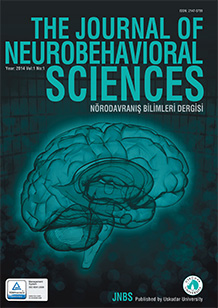 | 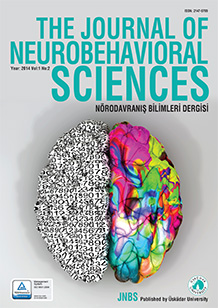 | 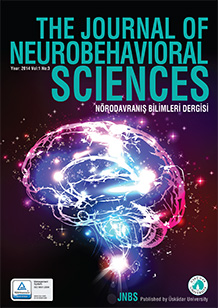 |
| Click to view.(PDF) | Click to view. (PDF) | Click to view. (PDF) |
| YEAR: 2015 VOL: 2 NO:1 | YEAR: 2015 VOL:2 NO:2 | YEAR: 2015 VOL:2 NO:3 |
|---|---|---|
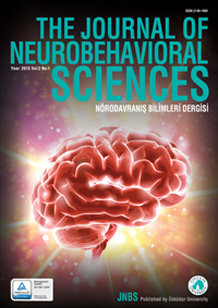 | 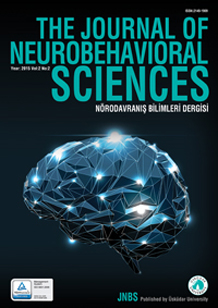 | 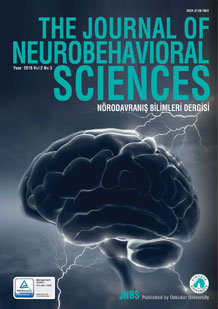 |
| Click to view.(PDF) | Click to view. (PDF) | Click to view. (PDF) |
| YEAR: 2016 VOL:3 NO:1 | YEAR: 2016 VOL:3 NO:2 | YEAR: 2016 VOL:3 NO:3 |
|---|---|---|
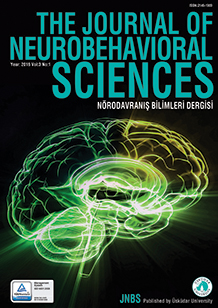 | 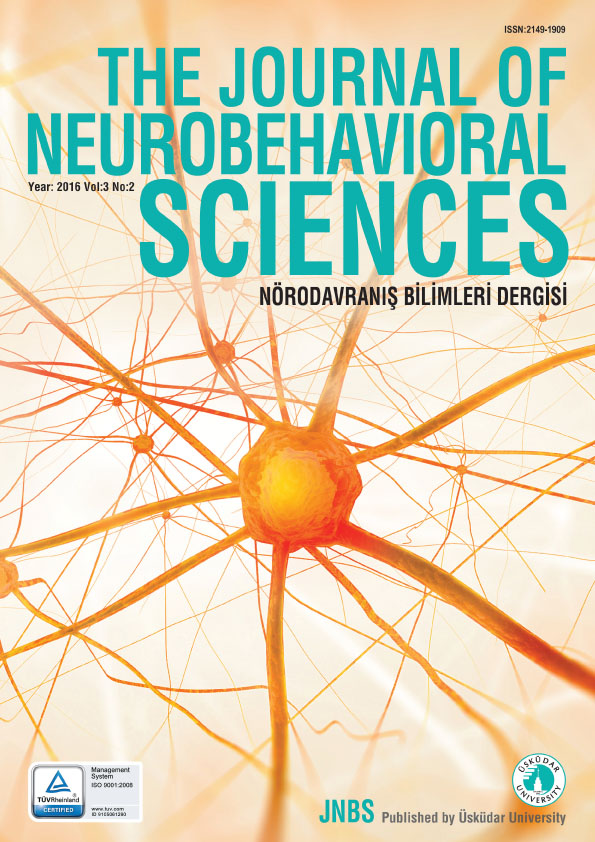 | 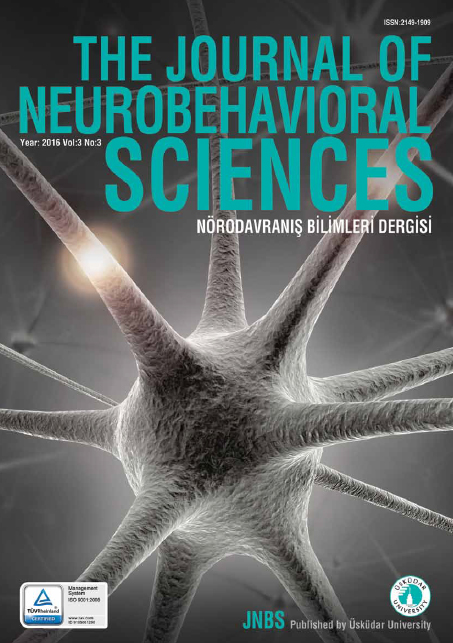 |
| Click to view.(PDF) | Click to view.(PDF) | Click to view. (PDF) |
| YEAR: 2017 VOL:4 NO:1 | YEAR: 2017 VOL:4 NO:2 | YEAR: 2017 VOL:4 NO:3 |
|---|---|---|
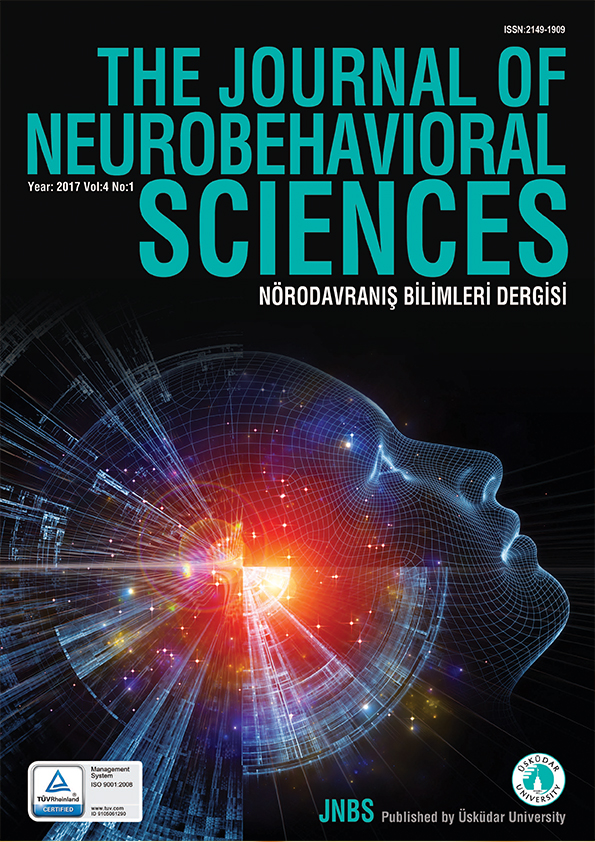 | 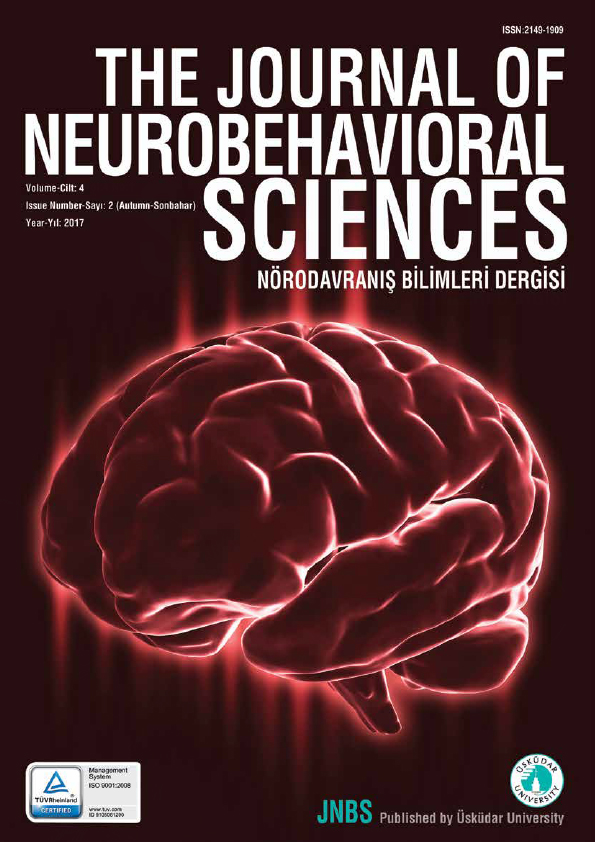 | 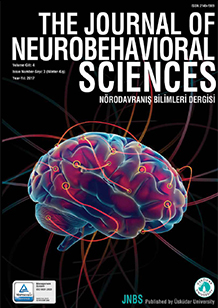 |
| Click to view. (PDF) | Click to view. (PDF) | Click to view.(PDF) |
| YEAR: 2018 VOL:5 NO:1 | YEAR: 2018 VOL:5 NO:2 | YEAR: 2018 VOL:5 NO:3 |
|---|---|---|
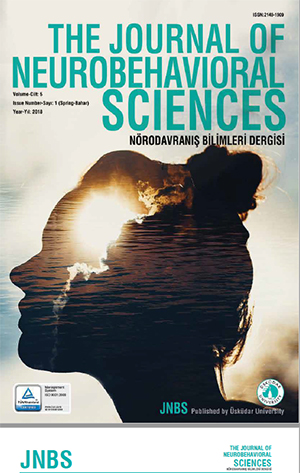 | 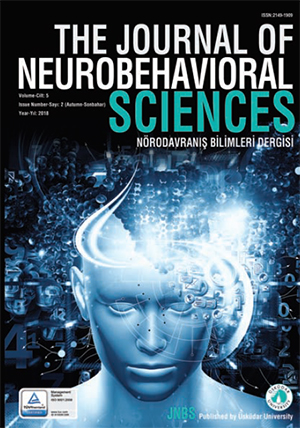 |  |
| Click to view. (PDF) | Click to view. (PDF) | Click to view.(PDF) |
| YEAR: 2019 VOL:6 NO:1 | YEAR: 2019 VOL:6 NO:2 | YEAR: 2019 VOL:6 NO:3 |
|---|---|---|
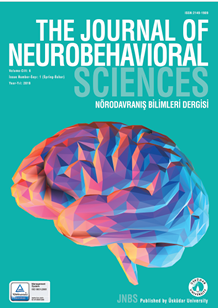 | 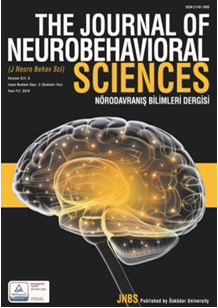 | 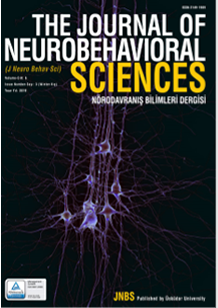 |
| Click to view.(PDF) | Click to view.(PDF) | Click to view.(PDF) |
| YEAR: 2020 VOL:7 NO:1 | YEAR: 2020 VOL:7 NO:2 | YEAR: 2020 VOL:7 NO:3 |
|---|---|---|
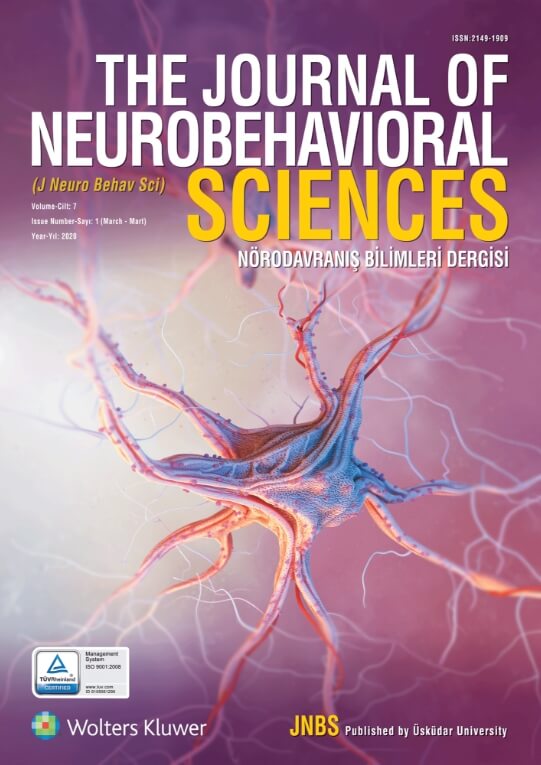 | 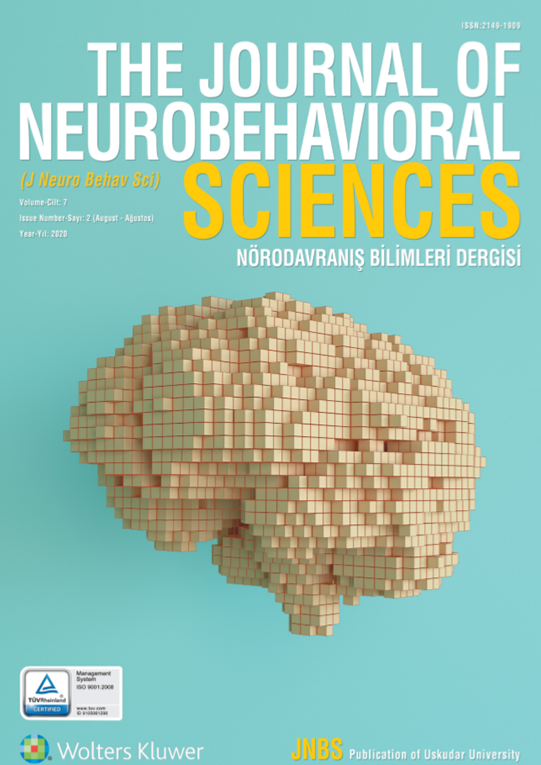 | 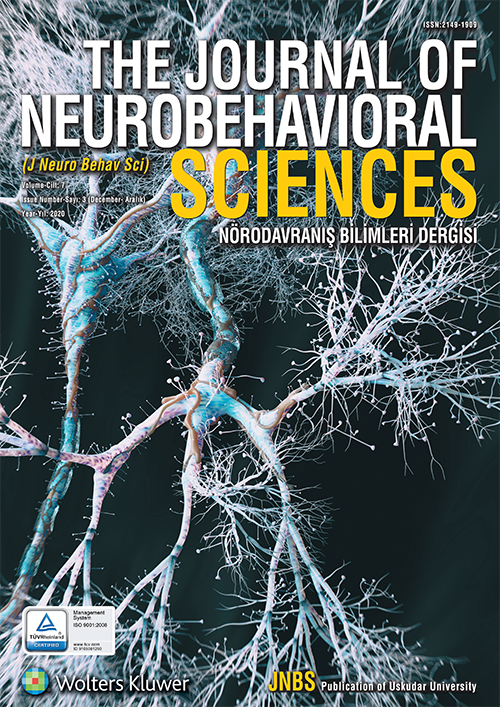 |
| Click to view.(PDF) | Click to view.(PDF) | Click to view.(PDF) |
| YEAR: 2021 VOL:8 NO:1 | YEAR: 2021 VOL:8 NO:2 | YEAR: 2021 VOL:8 NO:3 |
|---|---|---|
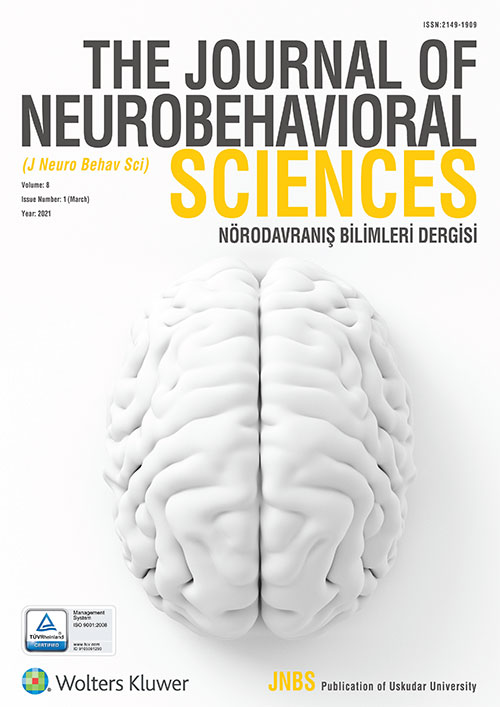 | 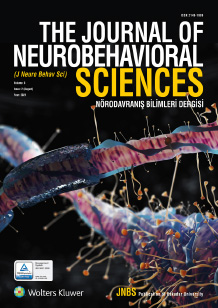 | 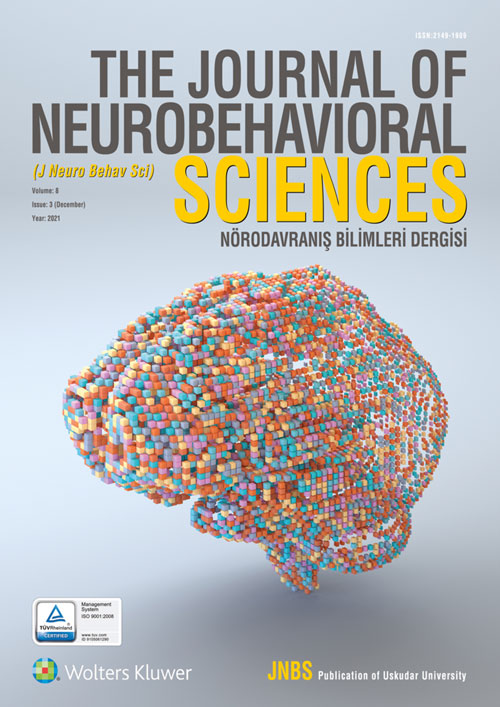 |
| Click to view.(PDF) | Click to view.(PDF) | Click to view.(PDF) |
| YEAR: 2022 VOL:9 NO:1 | YEAR: 2022 VOL:9 NO:2 | |
|---|---|---|
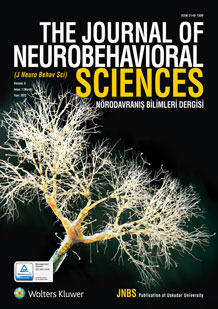 | 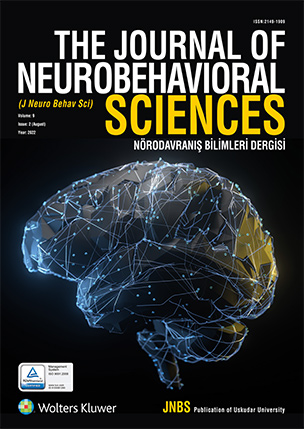 | 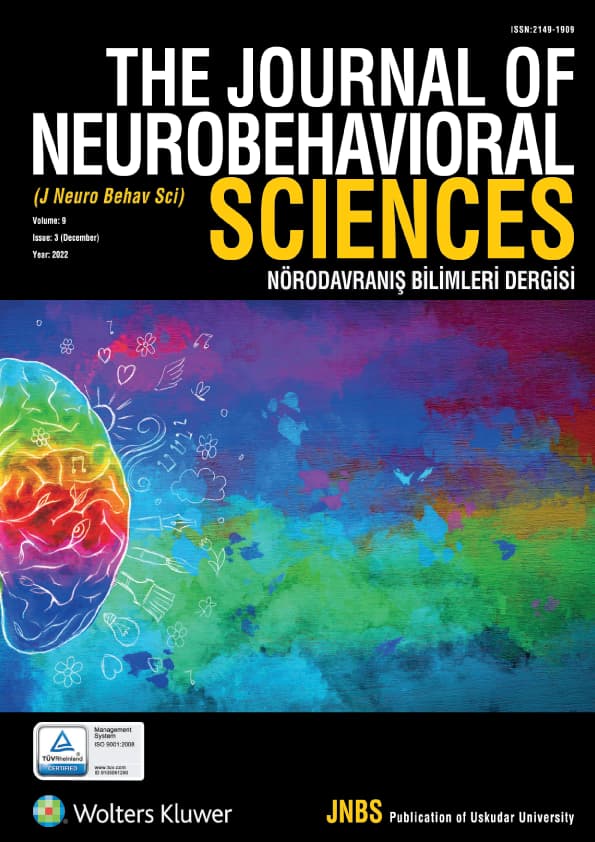 |
| Click to view.(PDF) | Click to view.(PDF) | Click to view.(PDF) |
Assist. Prof. Dr. Inci Karakas
Environmental Health Department, Institute of Health Sciences, Uskudar University, Istanbul,Türkiye
inci.karakas@uskudar.edu.tr
Phone: (0216) 400 2222 - 5120
Görüntüleme : 918
